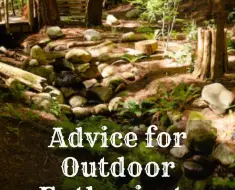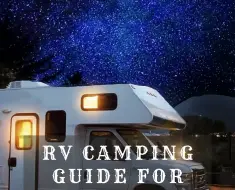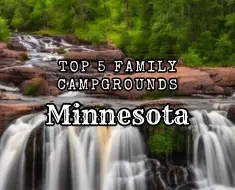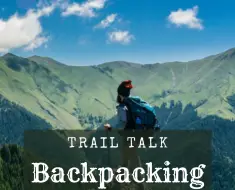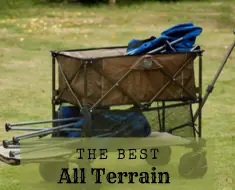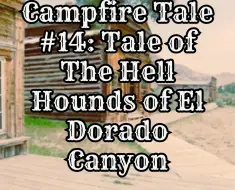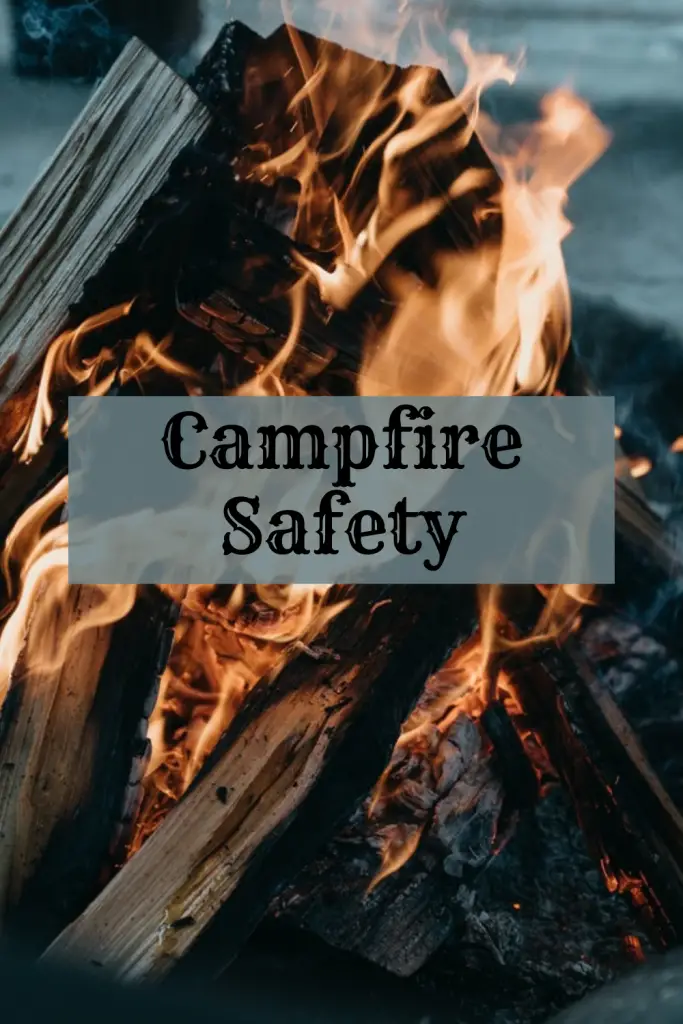
There’s nothing quite like sitting around a campfire with friends or family. The smell of the smoke, the sounds of laughter and music, and the taste of campfire-cooked food turns an ordinary night into a magical memory. Campfires are at the center of many of my best camping memories. I’ll never forget the nights I spent talking and laughing under the stars with the people I love most. I spend my summers working at youth summer camps and as you can probably imagine, campfires are a quintessential activity at camp. Kids and adults alike are always excited for a night of s’mores and songs. Campfires are great, but in the wrong hands, they can be dangerous. It is fire after all. So how do you make sure that you’re being safe with your fire? Let’s explore campfire safety!
What Comes First?

The first thing you should consider as you think about starting a fire is the fire rules where you are camping. In some places, especially in the west where forest fires consume millions of acres of forest, there are times when you are allowed to burn and times when you are not. These are generally indicated on signs at park entrances. You can also find information on local fire conditions in local news or online. If there is low fire danger, you are good to go! If there is a high fire danger, you might have to skip the fire. It’s important to consider the fire danger before starting any sort of fire. You wouldn’t want to accidentally start a forest fire!
Learn more about fire danger ratings follow this link!
Campfire Safety Gear
There are several gear items you might need with you to help you maintain a safe campfire. To get started, you will want something to start your fire with. Matches or a lighter will come in handy. Just as you want something to start the fire, you will also need something to put it out. A bucket of water or a bucket of sand do the trick nicely.
Another item you might need is something to help move the logs around as your fire is burning. It’s tempting to just kick the logs around as needed or to use another log to do this. However, it isn’t the safest option. I would recommend log tongs. You can purchase these at many major retail stores. If you are in more of a backcountry setting and do not have log tongs, a good option is a long stick, as long as you make sure that you are careful about where you put the end you are using to poke the fire. Never place it on dry leaves or anything that could be flammable.
You should also consider using fire gloves. They are fire-resistant and will protect your hands as you build the fire. Fire gloves can come in extra handy when cooking on a campfire because they will protect your hands as you move the food on and off the fire.
Building a Fire
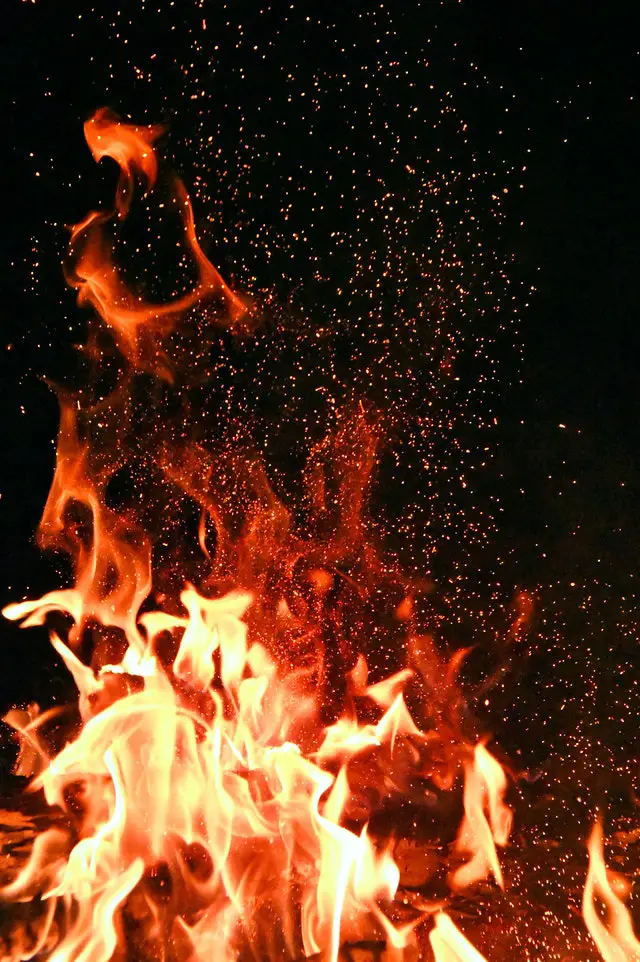
Once you have your safety gear, and you have determined that it is safe for you to build a fire in your area, it’s time to actually build it. Where you build a fire is very important. You want to make sure that you are only building campfires in areas specifically designated for fires. Building a fire where it is convenient might be tempting, but remember that to be a responsible and safe camper, you want to make sure you are minimizing your impact on the nature you’re enjoying. That means using designated fire spots. Most developed campgrounds will have designated fire pits that you must use. Check to make sure that there are not any dry leaves or other flammable materials too close to the fire ring. Remember to look up for low-hanging branches as well.
Next, you need materials to build a fire. Wood, sticks, twigs, and paper are all great. You want to start with small, easily lit things, like paper or very small pieces of wood. This is called tinder. Slowly add bigger and bigger pieces (kindling) until the fire is burning steadily. As you are adding things to the fire make sure not to get too close, and be aware that sometimes the wood will pop and send sparks shooting out. Don’t be alarmed by these, but make sure that if they land on the ground and are still glowing you put them out right away.
It may be tempting to use something a little stronger to get the fire blazing. I urge you not to use gasoline or any other accelerant on your campfire. While it may be a quick way to get it going, it is also quite dangerous and could cause you to lose control of your fire quite quickly. Frankly, it’s not worth the risk. Take your time and build the fire without those substances. It’s safer and will help you improve your fire-building skills!
Campfire Cooking
So, your fire is blazing and you want to cook on it. Campfire safety is extra important when cooking on a fire. I recommend waiting to cook on it until it is mostly coals. This makes sure you have more even cooking and you’ll be less likely to burn yourself. The best advice that I can give is to remember that fire is hot. Now I know that sounds like something you would tell a child and that you probably already know that, but it can be so easy to forget when cooking on the fire. Everything that sits on the fire will be very hot. Use caution when moving things off the fire and putting them back on.
Become an Expert campfire chef and wow your camping party!
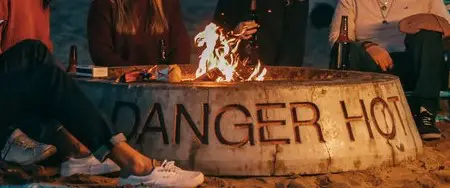
Also, this is a good spot to talk about grease fires. If you are cooking with a skillet and using any kind of grease you are at risk for a grease fire. They are fairly common but it can be scary when all of a sudden, your pan is on fire! It’s important to remember that grease fires do not respond well to water. Dumping your water bottle on it might seem like the quick solution, but it will only make the fire worse and cause it to spread. The best thing you can do is to deprive the fire of the thing it needs to keep growing: oxygen. Cover it with a lid or something that isn’t flammable. Once the oxygen is gone the fire will go out!
Putting Out Your Fire
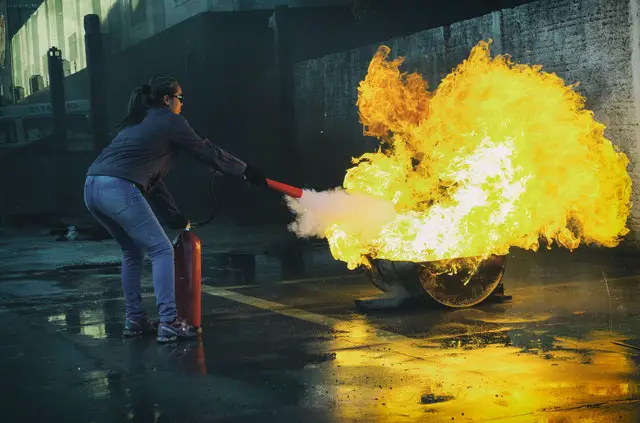
Maybe the most important action you can take to ensure your safety when having a campfire is to make sure the fire is put out properly. Leaving a fire partially lit and unattended could cause it to re-light and become much bigger than you ever intended. It is crucial that when you are done with your fire, you put it out completely. You can accomplish this by pouring water over the fire and completely soaking the logs and ground. Make sure every part of the fire is wet. Then use a stick or tongs to break up the fire. Look for any pieces that are still glowing. If it’s still glowing it can re-light. You want to be sure that the fire is completely out before you leave it, or go to sleep.
Campfire Safety for Kids
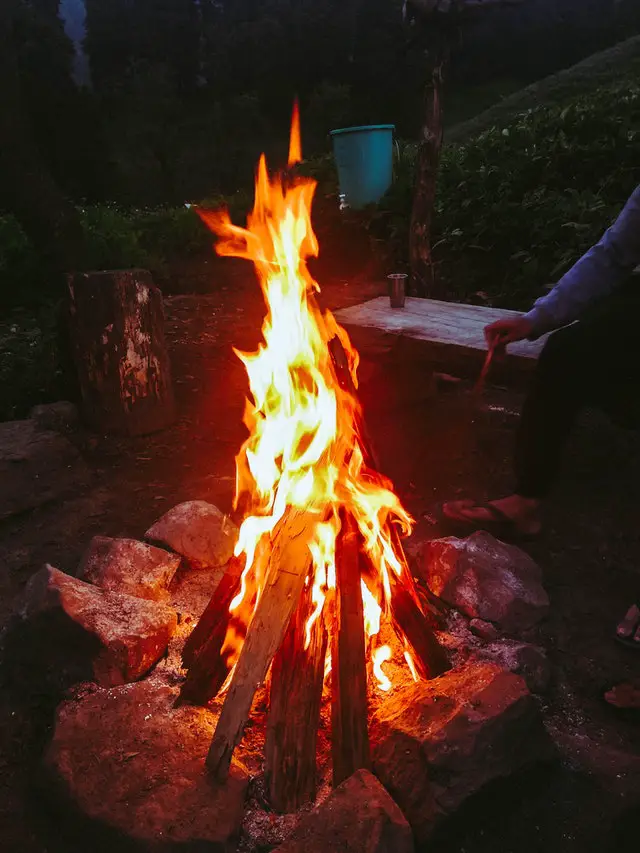
Now you may think that campfire safety is just for adults. I mean, fire is dangerous but not for kids, right? I think not!. It is important for kids to learn campfire safety as well! At summer camp, we teach kids how to keep themselves and others safe around a campfire. Kids should be supervised by a trusted adult around the campfire. I believe kids are very capable and can be involved in building the campfire and keeping it lit, as long as there is supervision and you explain why the campfire could be dangerous to the child.
Use caution and good judgment when allowing kids to put sticks into the fire, and make sure that they are not too close to the flames. The best action you can take to help kids be safe around the campfire is to educate them on the dangers of fire and how to keep themselves safe!
To Wrap it Up
Whether you’re camping with friends, family, or solo there’s nothing quite like the memories made around a campfire. They have the ability to bring people together in a very unique way, but they could prove destructive if not cared for properly. So follow proper campfire safety as you build, cook, enjoy, and put out the fire. As Smokey the Bear once said, “Only you can prevent forest fires”, so do your part and be safe with your campfire. It might be tempting to throw caution to the wind, but consider the impact you would have and make a safe choice. Know the fire rules in your area, only build fires in designated spots, cook carefully, and make sure the fire is completely out before leaving it unattended.
If you follow these easy safety precautions, you ensure that you and everyone else can continue to enjoy camping in that place for years to come! Happy camping!
Tell us your campfire safety experiences, both good and bad, in the comments below, on our Facebook, or Reddit. Feel free to share those wonderful pictures of sights only you were able to capture!

